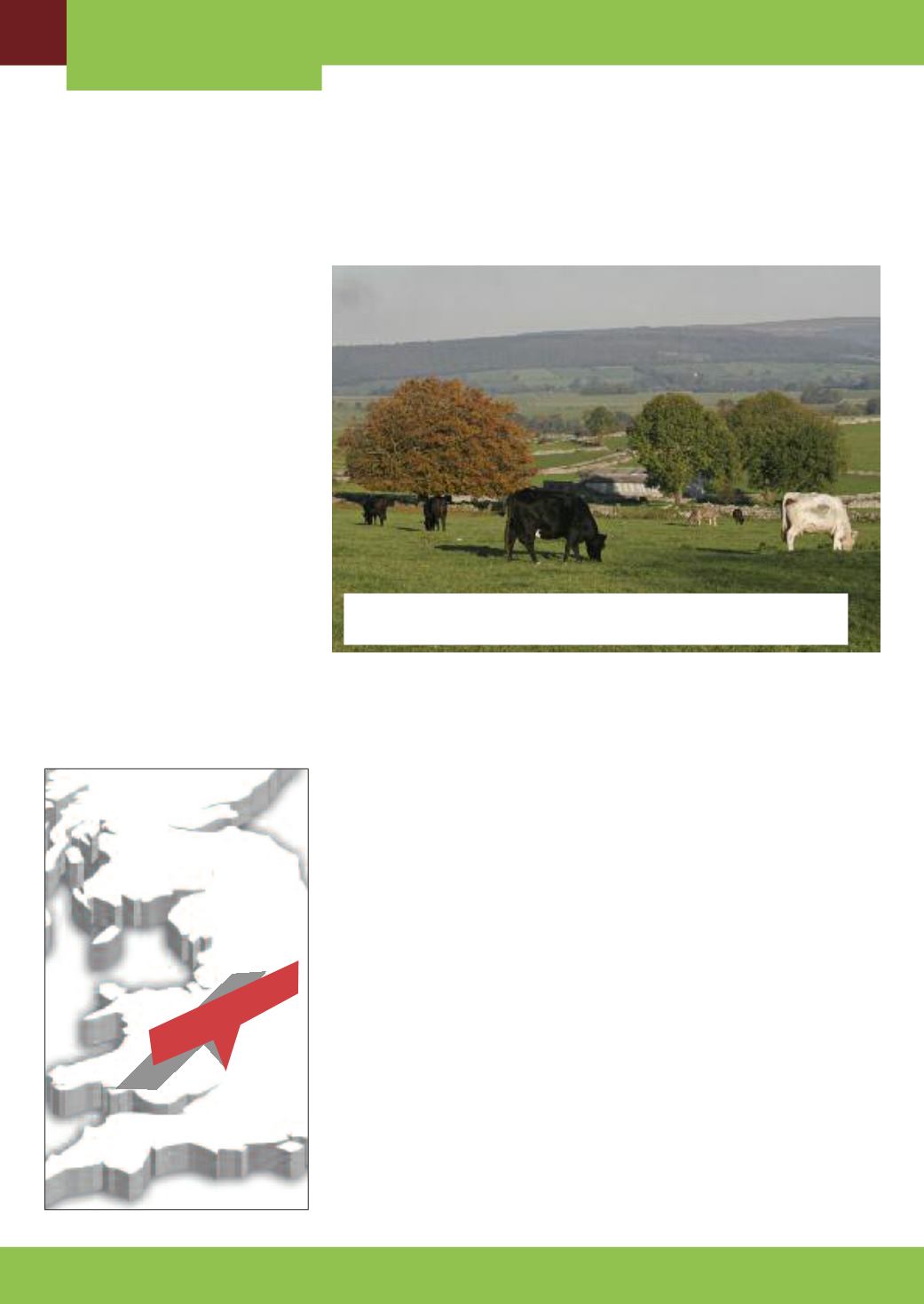
BVD SUPPLEMENT
LIVESTOCK MATTERS - BVD SUPPLEMENT
Dominic Alexander of Belmont Vets
in Herefordshire has recent
experience of the risks of BVD for
an unvaccinated beef herd as well
as the benefits of maintaining high
herd health status.
When Dominic Alexander went to
investigate a spate of lower limb
fractures in new born calves in a client’s
commercial suckler beef herd, he did
not immediately suspect BVD as the
cause of the problem.
Blood samples were taken initially
to check mineral levels in the affected
calves, but it quickly became clear that
infectious disease could be implicated
as there was a general weakness and
ill-thrift affecting a large proportion
of the spring-born group.
What nobody expected was a test
result showing that over half of the
group were positive for BVD – in fact
the initial response was to challenge
the results and carry out a second
set of blood tests.
“We suspected some kind of
contamination of the samples as it
is highly unusual to find so many
positives,” recalls Dominic. “A second
set of bloods was taken about four
weeks later and to our amazement
the results were consistent with
the earlier tests.
“This confirmed that the calves
were BVD PIs (persistently infected)
and prompted an investigation into
how such a dramatic situation
could have arisen.”
The herd had been closed for over a
year, with nothing bought-in or hired
for this period of time. This effectively
ruled out the most likely sourced of
infection, but is no guarantee that the
virus could not have entered the herd
through some other means.
“The herd was not being vaccinated
against BVD, so was what is termed
naive – or having no immunity,”
explains Dominic. “This means that
cows would be susceptible to infection,
and – if exposed when at certain stages
of pregnancy – could give birth to a
persistently infected (PI) calf.
“After considerable investigation, the
only conclusion that can be drawn in
this situation is that the virus spread
into the herd across an orchard from
cattle on a neighbouring farm. This
firstly illustrates how infectious BVD can
be, even at a distance, but also makes
clear how risky it is to maintain a herd
in a naive state, even if your own
biosecurity is very tight. Unfortunately
you cannot control what a
neighbouring farm might do, and
infectious agents like viruses are not
contained by farm boundaries.”
Persistently infected calves can appear
healthy but are highly infectious and as
such are the main way that BVD is
spread. In this case, the PI calves were
isolated from the main herd and – due
to the farm’s reluctance to cull such a
large proportion of its annual calf crop
– the advice was for the calves to
remain segregated through to finishing.
Moving forward, the herd has
implemented a vaccination programme,
backing this up with blood testing of all
stock that are introduced to the herd
and also blood testing of replacement
CONTROLLING BVD PAYS
DIVIDENDS IN BEEF HERDS
BVD can spread from farm to farm across field boundaries, so it is
advisable to be vigilant and protect cattle.
Belmont Vets


